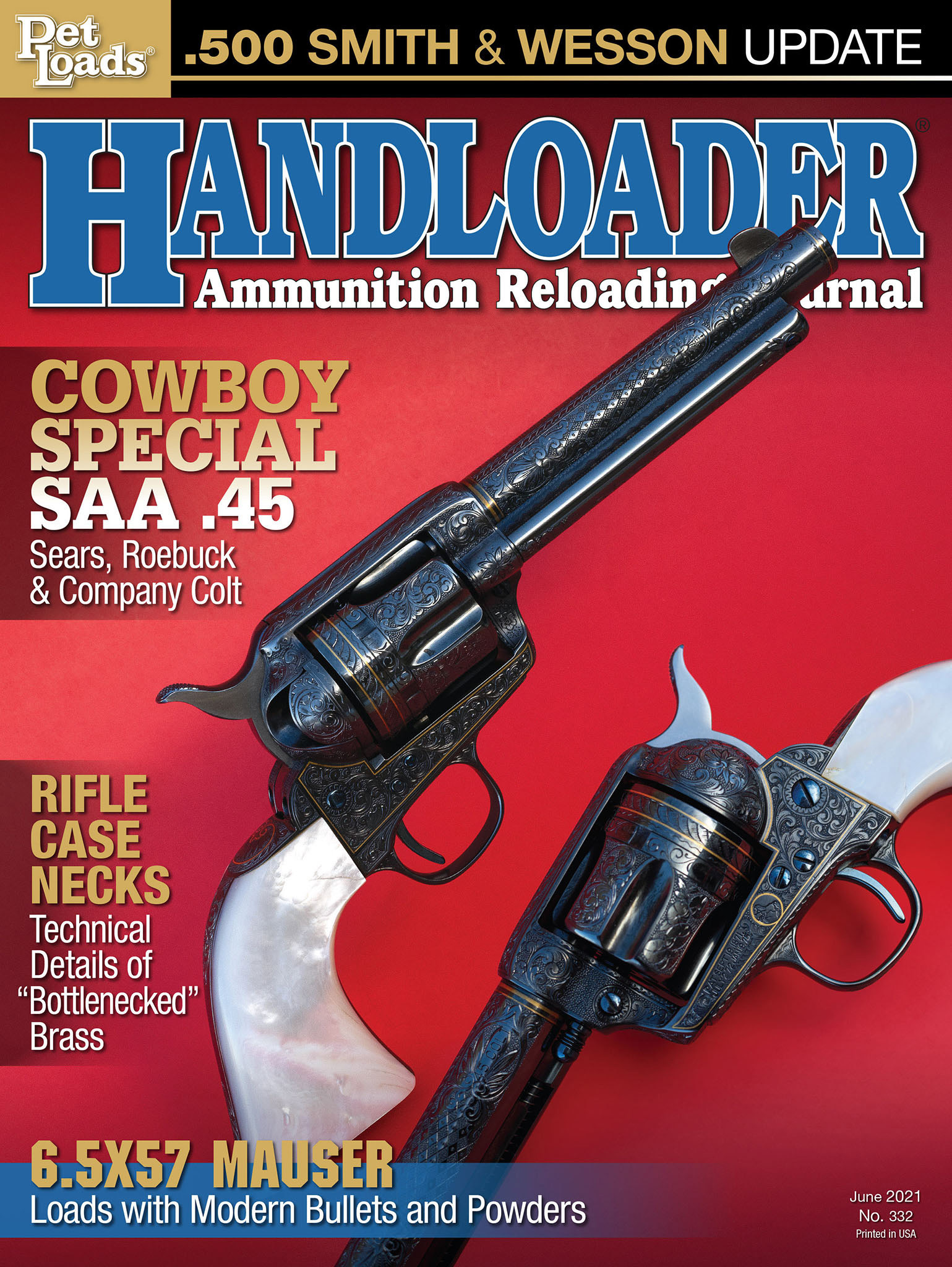Bullets & Brass
New Loads for the .45 ACP
column By: Brian Pearce | June, 21
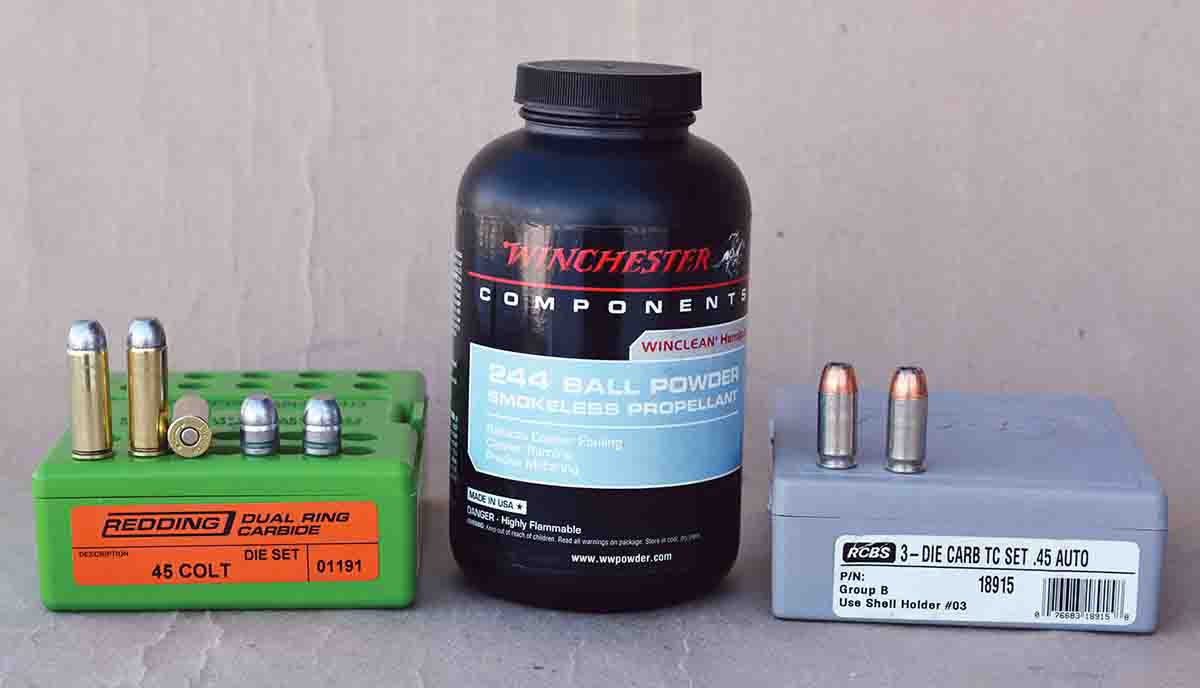
I found a couple of rifle powders early on, but the handgun powders that I normally use are impossible to find, such as Winchester W-231 and Alliant Unique. Recently, I was traveling through a small eastern Oregon town and found some Winchester W-244 powder and purchased 3 pounds. I have not used this powder in either the .45 ACP or .45 Colt cartridges and am hoping that you can offer load data advice.
In the .45 ACP I will be using two bullets, the 205-grain LBT-FN cast and the 230-grain Speer Gold Dot HP. Both loads will be fired in Model 1911 pistols, and I would prefer to use standard pressure loads. In the .45 Colt I will be using the Rim Rock 250-grain RNFP Cowboy bullet and would like to duplicate factory load velocities. Any help that you can offer would be appreciated.
J.J., Baker City OR
A: Everyone is struggling to find components right now, but you were fortunate to find Winchester W-244, which is a good powder in both the .45 ACP and .45 Colt. In the .45 ACP you will want to use 5.8 to 6.0 grains with the 205-grain LBT cast bullet for around 1,050 feet per second (fps). For the 230-grain Speer Gold Dot HP bullet, try 5.6 to 5.8 grains for around 880 to 910 fps, respectively.
Switching to the .45 Colt, you only stated “factory load velocities.” Since you don’t specify cowboy-style factory loads that typically have a muzzle velocity of around 725 fps with 250-grain bullets or traditional factory loads with similar bullet weights at around 860 fps, I will offer loads for the latter. Using 7.2 grains will give you around the 860 fps in most 4.75- and 5.5-inch barrels, while 7.6 grains will reach just over 900 fps and is still within industry pressure guidelines. In testing W-244 for position sensitivity in the .45 Colt with its generous case capacity, it performed very well and only showed an 8 fps change when compared with powder resting in the rear of the case versus resting on the base of the bullet.
It looks like you can keep shooting!
Nickel-Plated Brass
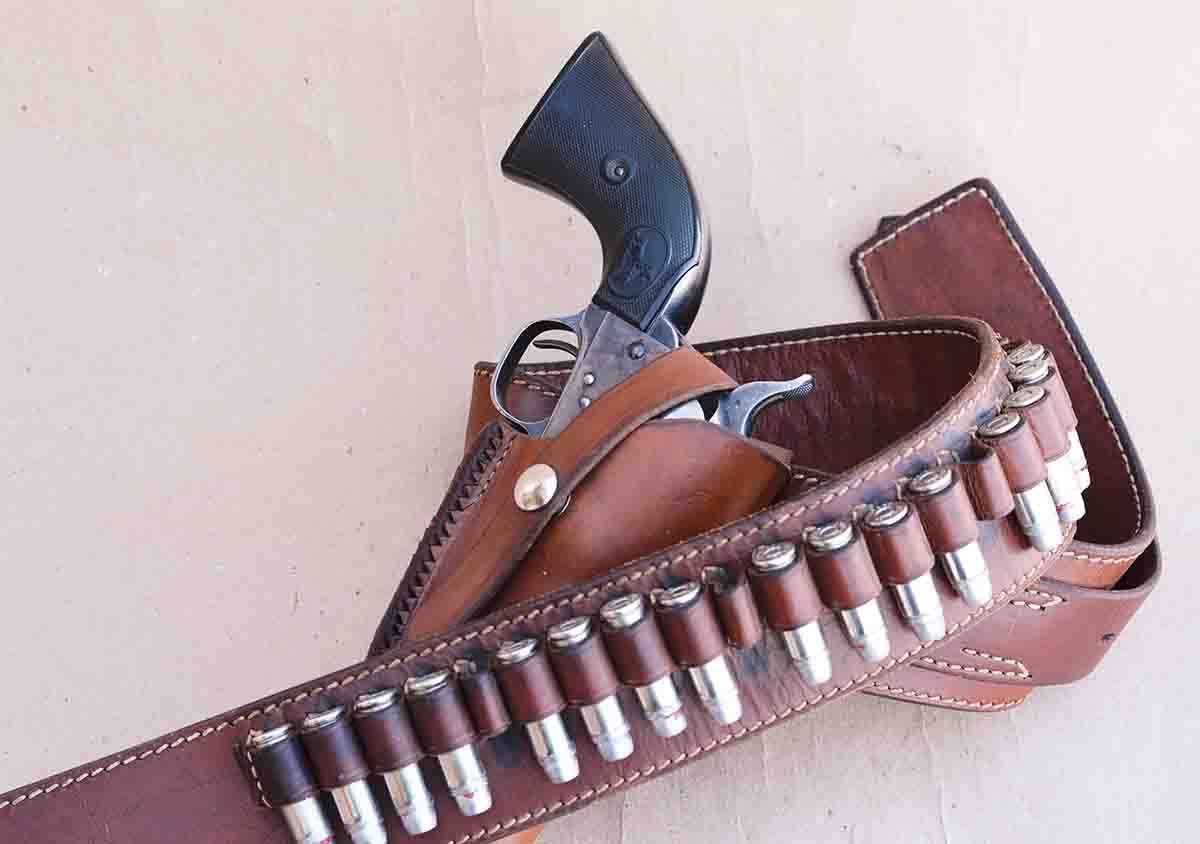
The next problem I noticed was that many cases began to split on the second or third reloading. At first, I thought that just a couple of cases had issues, but the problem only grew worse, and I was losing eight to 15 percent of the cases by the third reloading.
Most cases are splitting at the mouth, but a few split full-length in the case body, which seemed premature. I am not doing anything different in sizing or neck expanding. I generally use Starline or Winchester brass cases (without nickel-plating) and usually expect close to 10 reloadings before I begin to lose cases for the .357, and at least 15 or more reloadings for the .44 Special and .45 Colt.
Can you help explain why I am experiencing this problem? Is it the Remington case, or is there another problem that I am unaware of?
I very much enjoy Handloader magazine and read each issue from cover to cover. You and the other staff writers offer great insight to handloading and guns.
P.B., Reno NV
A: There has been much speculation as to why factories nickel- plate some cases. Some suggest that it makes extraction of fired cases easier, which my experience does not support. Generally, cases are plated primarily to prevent corrosion, such as being carried in a cartridge belt or when exposed to the elements. Plated cases serve to help loaded cartridges (often of premium-type factory loads) appear more distinguished, offer eye appeal and help justify their greater prices.
Not all plating processes are the same. Some plated cases seem to stay intact longer and can be reloaded many times before problems begin to surface. In this respect, Speer and Winchester take honors, while Starline (when available) is also very good. However, some company’s nickel-plating process seems to cause the cases to suffer from hydrogen embrittlement, which would explain why you are experiencing case mouth cracking, etc. In other words, the problem is not caused by anything that you are doing.
Personally, I value nickel-plated cases for their corrosion resistance. For example, I often keep cartridges in my leather gun belts. Sometimes they are used quickly, but other times they might be there for a few months. Sometimes, in as little as two weeks, brass cases tend to react with the leather (and oil) and turn green. This reaction not only begins deterioration of the case, but should be removed before being fired in sixguns. Even tumbling fired cases that have been corroded tends to take considerable time to fully clean them up. For these reasons, my gun belts are usually filled with nickel- plated cases, which are only fired sparingly, such as when I am out riding in the mountains checking or gathering cattle and have a chance at an unlucky coyote, wolf, etc. However, I simply do not expect nickel-plated cases to last as long as brass cases.
.38 Special Loaded Length
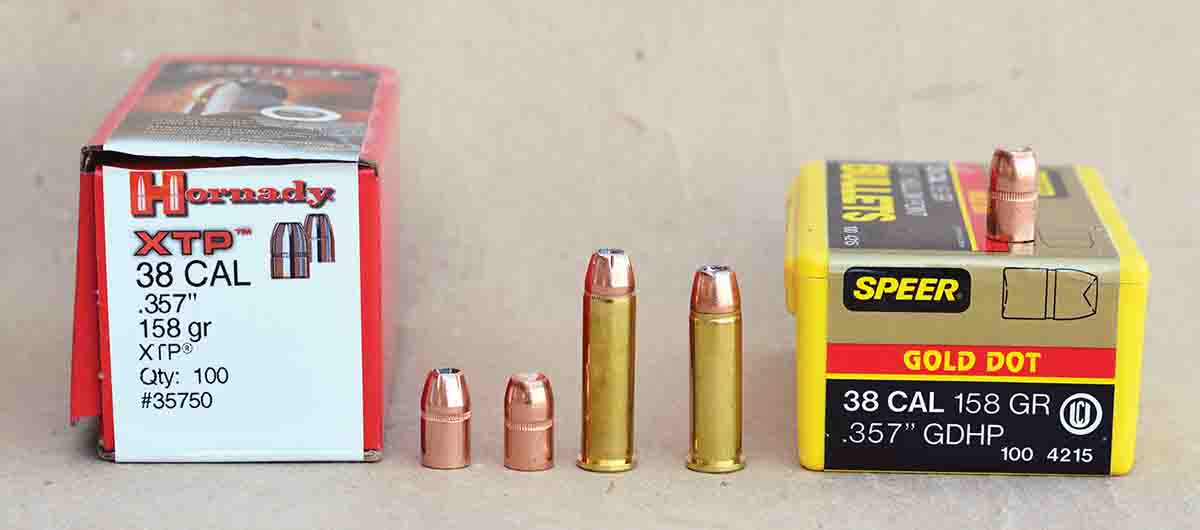
Could I use the .38 Special cases, but seat bullets out to the same overall cartridge length as the .357 Magnum? This should give the same case capacity and I could use standard .357 Magnum data. Is this a good idea, or am I missing something? Should I consider cast bullets instead?
I have recently begun reading Handloader on a regular basis and find it full of great information. Thank you in advance for any information that you can provide.
D.K., Facebook
A: There are a couple of problems with using .357 Magnum data in .38 Special cases. First, neither the Speer 158-grain Deep Curl HP nor Hornady XTP-HP bullets feature a crimp cannelure in the proper place to be seated out for the same overall cartridge length as the .357. To achieve this, bullets could be taper crimped in place, or a CH Tool & Die Cannelure Tool could be used to create a crimp groove in the desired location, but that is not the only problem. Thirty-Eight Special cases, even +P versions, do not offer as much strength as the .357 Magnum case. Many past gun writers have promoted using .38 Special cases with .357 data, but with bullets seated out, such as the Lyman Thompson designed cast bullet mould 358156 at 155 grains (crimped in the lower crimp groove), or the Lyman Keith designed bullet mould 358429 at 173 grains.
However, cases were usually new or only once-fired and discarded after just one firing of the heavy loads, or at least relinquished to light target loads thereafter. I have used such data extensively but have seen cases separate on the first firing just forward of the head. There is always the risk that one of these high-pressure .38 loads will find its way into a .38 Special revolver that is not designed for that level of pressure. For these reasons, I generally don’t recommend this practice.
I suggest using .38/44-type handloading data, which will give a notable performance edge over standard .38 Special data, along with respectable case life. An excellent load includes the above mentioned Lyman 358156 bullet in either hollowpoint or solid configuration at around 155 to 162 grains, respectively, and use a crimp on gas check from Hornady or Lyman. Using 12.0 grains of Alliant 2400 powder will produce around 1,200 fps in most revolvers.
Use the lower crimp groove for an overall cartridge length of 1.525 inches. Ignite this load with a standard primer such as the Federal 100 or CCI 500. While this load generates around 25,000 psi, it is completely safe in all .357 Magnum revolvers and many heavy frame .38 Special guns, but be certain to label your ammunition to prevent it from ending up in the wrong guns.
6.5 PRC Loads
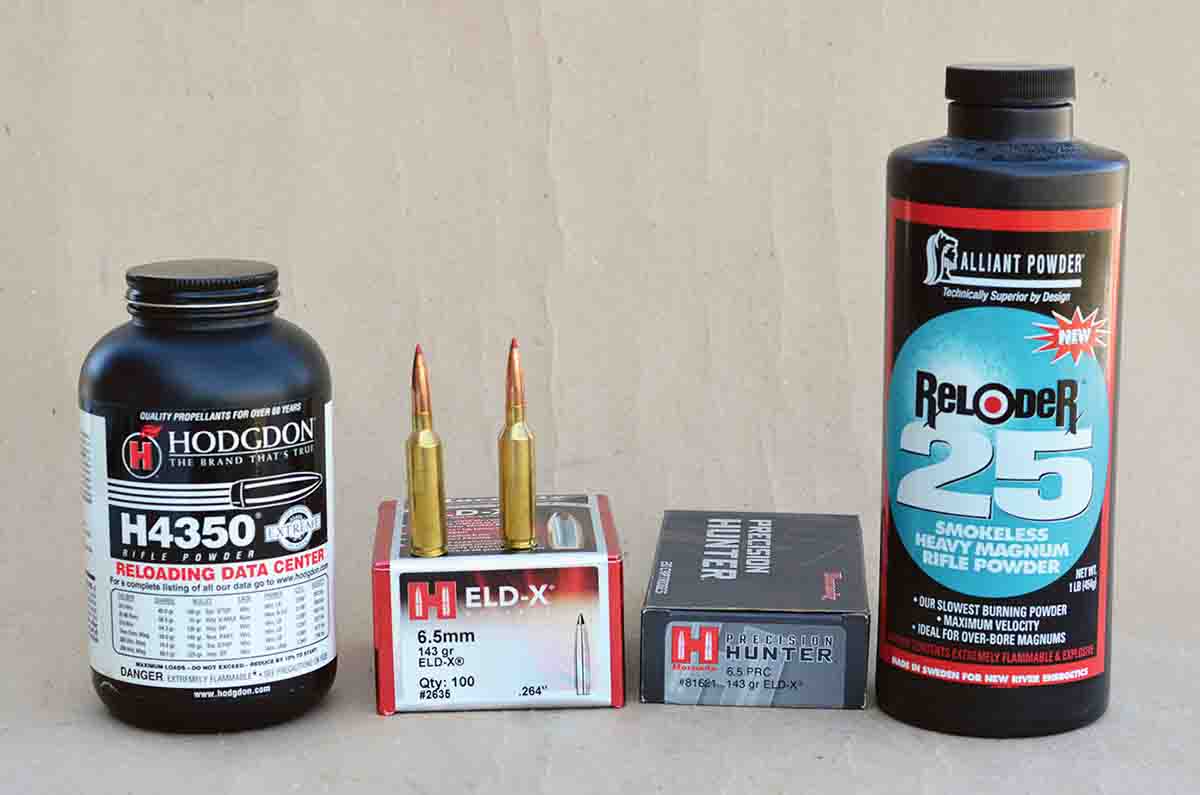
I am hoping you can offer load data for the 129-grain Hornady SST at around 3,050 fps and for the Hornady 143-grain ELD-X at velocities that will more or less duplicate factory loads. I will need the overall length of factory loads, as I failed to measure them before firing.
I am hoping that if I reach the same velocity as factory loads, I will obtain similar accuracy, which has been outstanding in the Ruger rifle. I only have limited rifle powders, but I do have two pounds of Hodgdon H-4350 powder and 3 pounds of Alliant Reloder 25. Any help you can offer will be greatly appreciated.
Thank you for producing such a great magazine.
H.J., Helena MT
A: For the Hornady 129-grain SST bullet, try 54.0 grains of Hodgdon H-4350 powder, which will more or less produce the 3,050 fps that you are seeking. Moving up to the Hornady 143- grain ELD-X bullet, try 58.0 grains of Alliant Reloder 25 powder for 2,900 fps. I realize that velocity is below Hornady’s listed speeds; however, in my test rifle with a 24-inch barrel, factory loads averaged 2,891 fps.
Nonetheless, you might want to bump the powder charge to 60.0 grains, which will produce around 3,000 fps. You might see a change in accuracy, as groups could open up, but there is an equal chance that they could tighten. Regardless, it is worth a try.
Factory loads with the 143- grain ELD-X bullet are loaded with an overall length of 2.950 inches. A CCI BR-2 primer was used to develop the above data.


